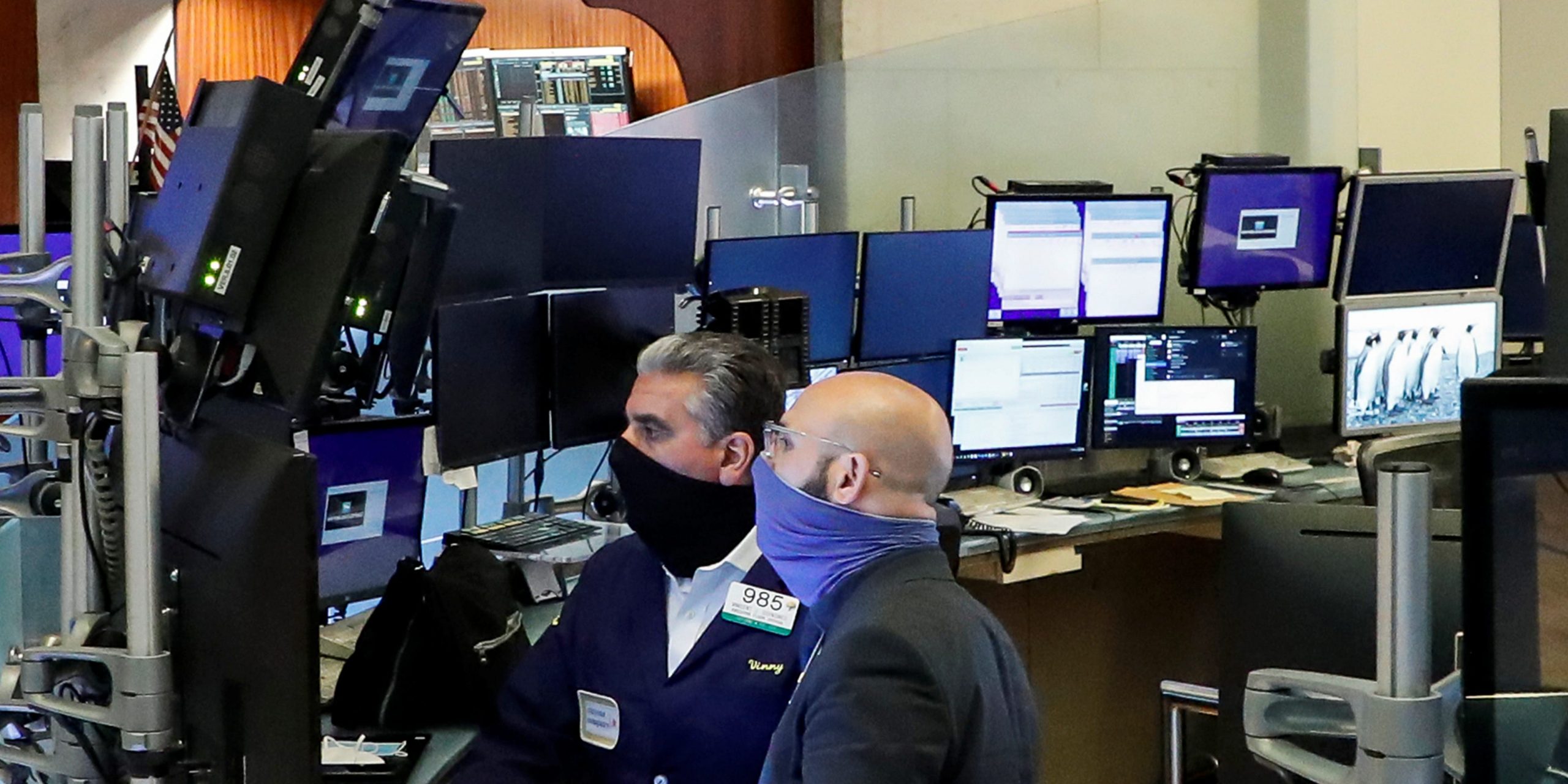
Reuters
-
Canaccord Genuity’s strategist Tony Dwyer told CNBC’s “Trading Nation” Monday, investors can still benefit from a six-12 month market rebound.
-
He said: ‘Why do I want to buy weakness now when I didn’t want to buy it in early March? The answer is the fundamental backdrop is much better.”
- Dwyer said more clarity around the Federal Reserve’s policy actions compared to what was available in March, combined with excess liquidity will help investors ride out any US-election related volatility.
- Visit Business Insider’s homepage for more stories.
It is not too late for investors to buy the dip, and capitalize on recent stock market weakness, Canaccord Genuity’s chief market strategist Tony Dwyer told CNBC’s “Trading Nation” Monday.
US stocks are on course for their first monthly drop in six months, but Dwyer said investors can still benefit from a six-12 month market rebound.
“The question that I had to ask myself is, ‘Why do I want to buy weakness now, when I didn’t want to buy it in early March?'” Dwyer said. “The answer is the fundamental backdrop is much better.”
Stocks bounced on Monday, with the S&P 500 logging its biggest one-day rise in three weeks, after House Speaker Nancy Pelosi indicated that Democrats' new $2.4 trillion proposal may come to a vote as soon as next week and that she and Treasury Secretary Steven Mnuchin continued to hold talks on passing new relief.
S&P 500 is now trading only roughly 7% away from it's all-time high hit in September.
Dwyer said greater certainty around how the Fed will react, means investors are far better prepared to take risks than when markets tanked in early March on coronavirus uncertainty.
"Back then, you didn't know even what Covid-19 was. You didn't know how it was going to affect the economy. We were still in the process of wondering whether we should shut down, and we had no idea how the Fed was going to react," he added.
Dwyer warned in a note last week the market was "passing over the first speed bump" in its journey to economic recovery.
"In this environment, we know exactly what the Fed is going to do because they explicitly told us. We also know that we're in a global synchronized pivot higher off of very weak levels in the global economy and that really sets the stage for intermediate-term opportunity," he said.
The Fed has indicated that it has no plans to inject any fresh stimulus into the financial system at this point, although interest rates will stay near zero until at least 2023.
Dwyer said excess liquidity, and an economic recovery will help investors ride out any volatility caused by the impending US election.
"We don't know who's going to win, obviously. It's a pretty tight race. We don't know if there's going to be a Democratic sweep and we don't know if either side will accept the results," Dwyer said.
"How could you possibly construct a portfolio on such a guess? So, what you're left with, again, are the two things that have been the driving force behind our bullishness since May: excess liquidity and a synchronized global recovery," he concluded.











